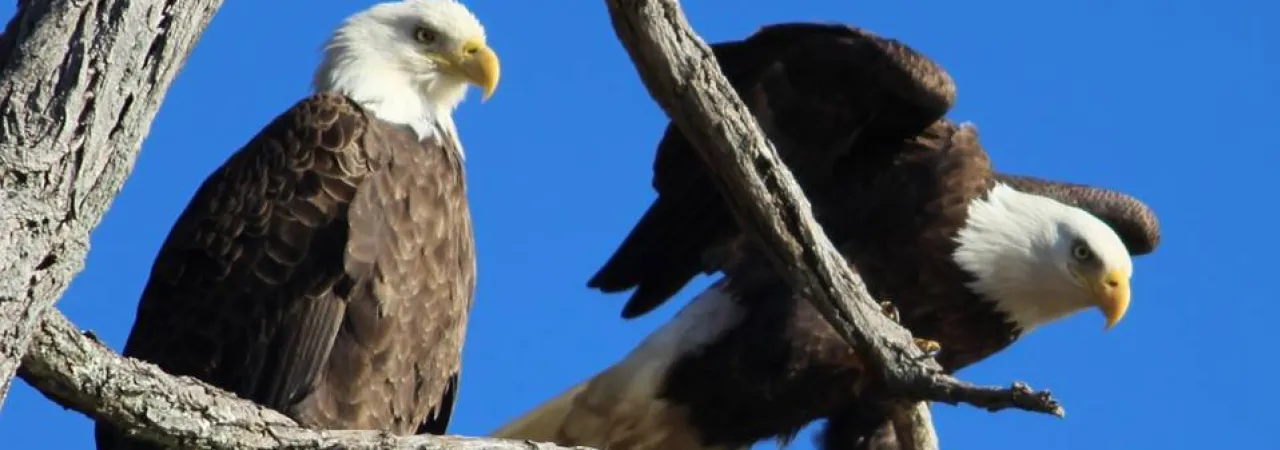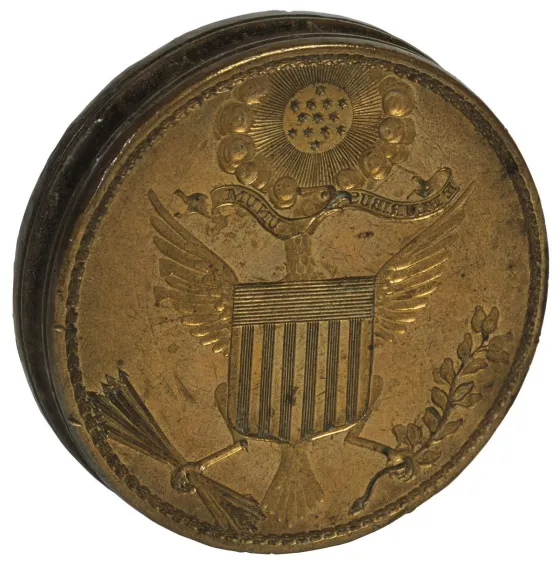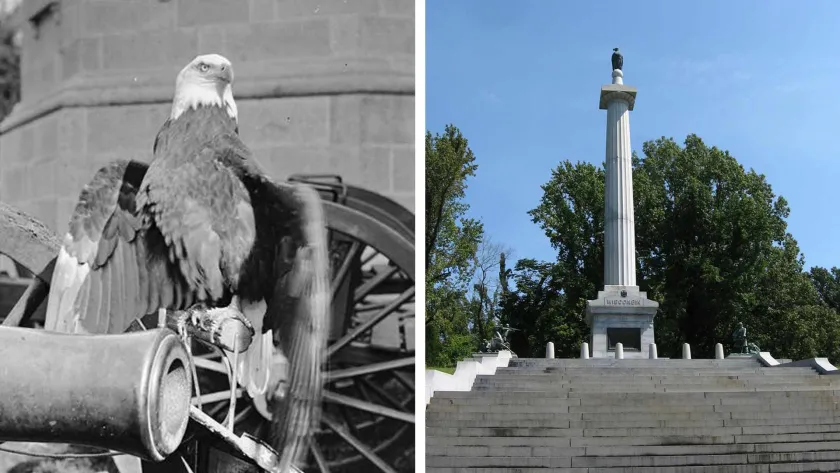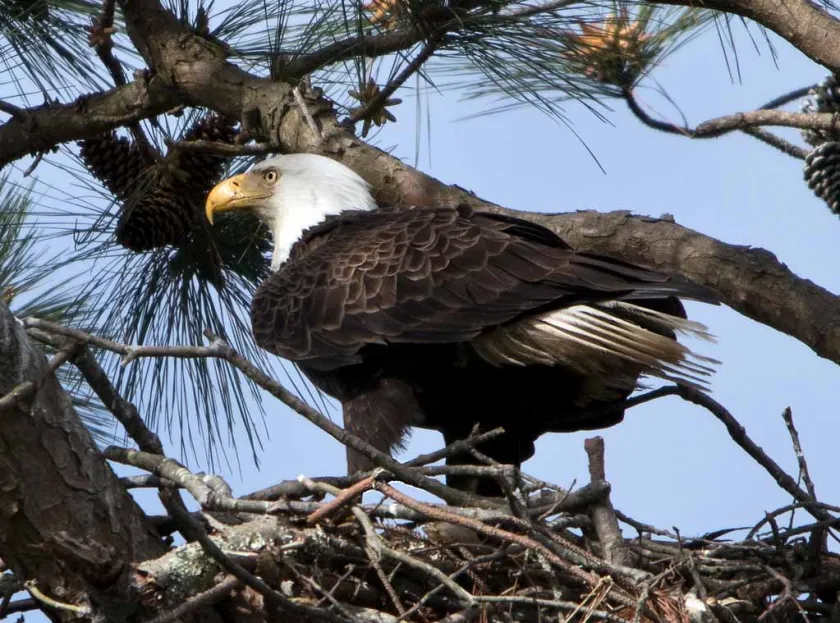Soaring with Eagles

Bald eagles at George Washington Birthplace National Monument
Hope this finds you well and looking forward to a new season! It doesn’t take an “eagle-eye” to see spring on the horizon and the coming gifts of nature with its blossoms and greenery.
Eagles — A National Symbol
Eagles are our national symbol, chosen to represent the United States in June of 1782 and incorporated into the Great Seal of the United States after Secretary of Congress Charles Thomson suggested the “American eagle" as an emblem for this seal.

The white-feathered eagle heads are referred to as “bald”, but these fine creatures are fully feathered. Bald eagles have long been attributed with the gift of keen distance vision, being able to see their prey miles away! Eagles have five times as many light-sensing cells in their eyes than do humans, with most of these cells including cones that see color. Humans, on the other hand, have a much smaller percentage of cone cells that see color. Eagles also have the ability to use their eyes independently or together, depending on what they’re focused on.
The symbolism of eagles is legend, going back to ancient times when the eagle was considered a symbol of strength. During the Revolutionary War, it has been said that a bald eagle seen on a battlefield one early morning emitted a piercing cry for freedom to Patriot soldiers for a call to arms against the British. Bald Eagles are found primarily in North America, so the British would surely have been alarmed!
"Old Abe" The Bald Eagle
During the American Civil War, a bald eagle named “Old Abe” created his own legend as mascot of the 8th Wisconsin Volunteer Infantry Regiment. This famous bald eagle was taken from his nest when he was two weeks old, in northern Chippewa County, Wisconsin, by a Chippewa Indian, who sold the bald eagle for a small sum to soldiers from Eau Claire County, later known as Company C of the 8th Wisconsin.

Named after Abraham Lincoln, “Old Abe”, as the 8th Wisconsin’s pet, was assigned a prominent place near their Colors and had a special perch. He was with the Regiment during the Siege of Corinth, the Battle of Iuka, Siege of Vicksburg and the Battle of Fort DeRussy, among other battles. These battlefields are all sites where the American Battlefield Trust has preserved land, totaling approximately 969 acres to date!
In 1864, after their three-year enlistment, veterans of the 8th Wisconsin traveled back to Wisconsin along with “Old Abe”, who was then given to the State of Wisconsin. He was their celebrity, on display and later making appearances at the 1876 Centennial Exposition in Philadelphia. “Old Abe” lived until 1881, slightly less than the typical life span of a bald eagle. The image of “Old Abe” is depicted on the U.S. Army’s 101st Airborne Division, along with other honorable “perches” including the Wisconsin Memorial at the Vicksburg National Military Park.

Thanks to federal protections as well as the regulation of the use of DDT, the bald eagle is no longer the endangered species it had at one time become. Hopefully, this spring, you’ll be able to see a bald eagle on a battlefield, soaring high in the sky or perched on a nest in a tall tree. Our national symbol is majestic!





